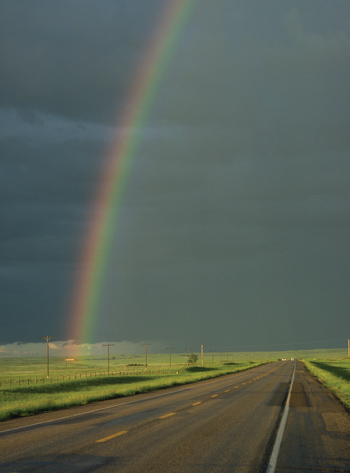
FLOOD DAMAGE: ARE YOU COVERED?
BY BY ALAN PLAFKER, PRESIDENT & CEO
MEMBER BROKERAGE SERVICE LLC
A MELROSE CREDIT UNION SERVICE ORGANIZATION
Floods can even hit in low risk areas—make sure you’re covered.
If your car is washed away in a flood its loss likely will be covered by your auto policy. But, did you know that if your home is damaged in the same flood it won’t be covered by your homeowners insurance? This expensive fact has become a good deal more relevant in recent years with heavy rainfall causing record flooding in the Northeast. These events remind us that you don’t have to live in a high risk flood plain to be vulnerable to flooding.
Flooding, according to the Federal Emergency Management Agency, is the most common natural disaster in the United States. Floods in the U.S. cause more than $2 billion in property damage annually. Surprisingly, approximately 25 percent of all NFIP claims are made by people in low to moderate risk areas.
You should know before it’s too late—flood damage is not covered under a standard homeowners, farm owners or business owners policy. In fact, nearly all insurance policies specifically exclude damages from flooding. Fortunately, flood insurance is available through the federal government’s National Flood Insurance Program and some specialty programs.

Flood Facts:
The NFIP. As long as your locality participates in the program, NFIP coverage can be purchased through your agency today! They can help you explore your options. Separate coverages apply to buildings and contents. Coverage up to $250,000 is available for residential buildings, and up to $100,000 for contents. Coverage for farm buildings and other nonresidential buildings, as well as separate coverage for their contents, are available in limits of up to $500,000. Both property owners and renters are eligible for this coverage. All policies are subject to exclusions.
What this year could bring. Most financial services literature features the disclaimer: “Past performance is no guarantee of future results.” The weather is like that, too. Yet, it’s hard to ignore the flurry of exceptional weather disasters in recent years.
Just in 2011 we had countless tornadoes across the Midwest and the South; we had 100 year floods along the Mississippi; we had hurricanes Irene and Lee which brought extreme flooding across the Northeast—flooding from which many are still recovering. Meanwhile, floods can happen anytime, for any number of reasons: heavy rainfall, a broken dam or reservoir near your home, burst water mains, etc.
You cannot plan for a flood. You can only know that should it happen to you it could devastate your home, your family and everything you’ve worked so hard to acquire. Take steps to protect yourself. Let your agent help.
What is a Flood?
Anywhere it rains, it can flood. Many conditions can result in a flood:
A flood is a general and temporary condition where two or more acres of normally dry land or two or more properties are inundated by water or mudflow from one of the following:
Is my home insured for damage that may result from flooding caused by a hurricane or other storm?
Not necessarily. Generally, coverage provided by a standard home or business policy does not include damage caused by flooding or mudslides. It is important to note this type of damage could be extremely destructive to your property and without insurance you could be devastated financially.
How can I get insurance coverage so I’m protected for flood damage from a natural disaster?
First, contact your insurance agency. They have access to comprehensive information and can help you determine if you need flood insurance. Throughout the United States, more than 20,000 communities participate in the Federal Emergency Management Agency’s National Flood Insurance Program which offers flood insurance. An NFIP policy typically includes coverage for:

How much protection can I get?
You can obtain flood coverage up to $250,000 on your home, $100,000 on its contents and $500,000 for businesses.
Can I buy flood insurance at any time?
Yes, but in most cases there is a 30 day waiting period between the time flood insurance is purchased and the time coverage is in force.
How can I prepare for a catastrophe such as flooding?
Along with obtaining flood insurance protection you should heed storm warnings and follow evacuation procedures such as boarding up windows and storing outside items inside; shutting off utilities; and preparing an emergency kit that contains food and water, a portable can opener, clothing, blankets, flashlights, first aid supplies and a battery operated radio.
Also, maintain a current household or business inventory of your property and possessions and keep it in a safe place such as a safe deposit box. An up to date inventory will prove useful when filing your insurance claim.
Call your insurance agent now for a Flood Insurance quote. It is usually inexpensive & affordable. Remember, it usually takes 30 days for coverage to be effective so don’t delay. Insure your future. Start planning NOW before it is too late!
For more information talk to your financial professional, legal advisor, or the author of this article.
Your Professional Insurance Agent …
We want you to know about the insurance you’re buying.
Alan Plafker, CPIA is President of Member Brokerage Service LLC, a Melrose Credit Union Service Organization. He is a Certified Professional Insurance Agent and licensed Insurance Broker. He serves as First Vice President on the Board of Directors the PIANY (Professional Insurance Agents Association of NY), serves on the Board of CIBGNY (Council of Insurance Brokers of Greater NY), and serves as Treasurer for the New York Independent Livery Driver Benefit Fund Board of Directors. His Agency insures thousands of polices for TLC Insurance as well as many policies for all types of insurance. You can reach him in his Briarwood, Queens office at (718) 523-1300 Ext. 1082, or visit the website at: www.MemberBrokerage.com